Photos by Kim Sanford
This story was reported and photographed prior to the COVID-19 pandemic.
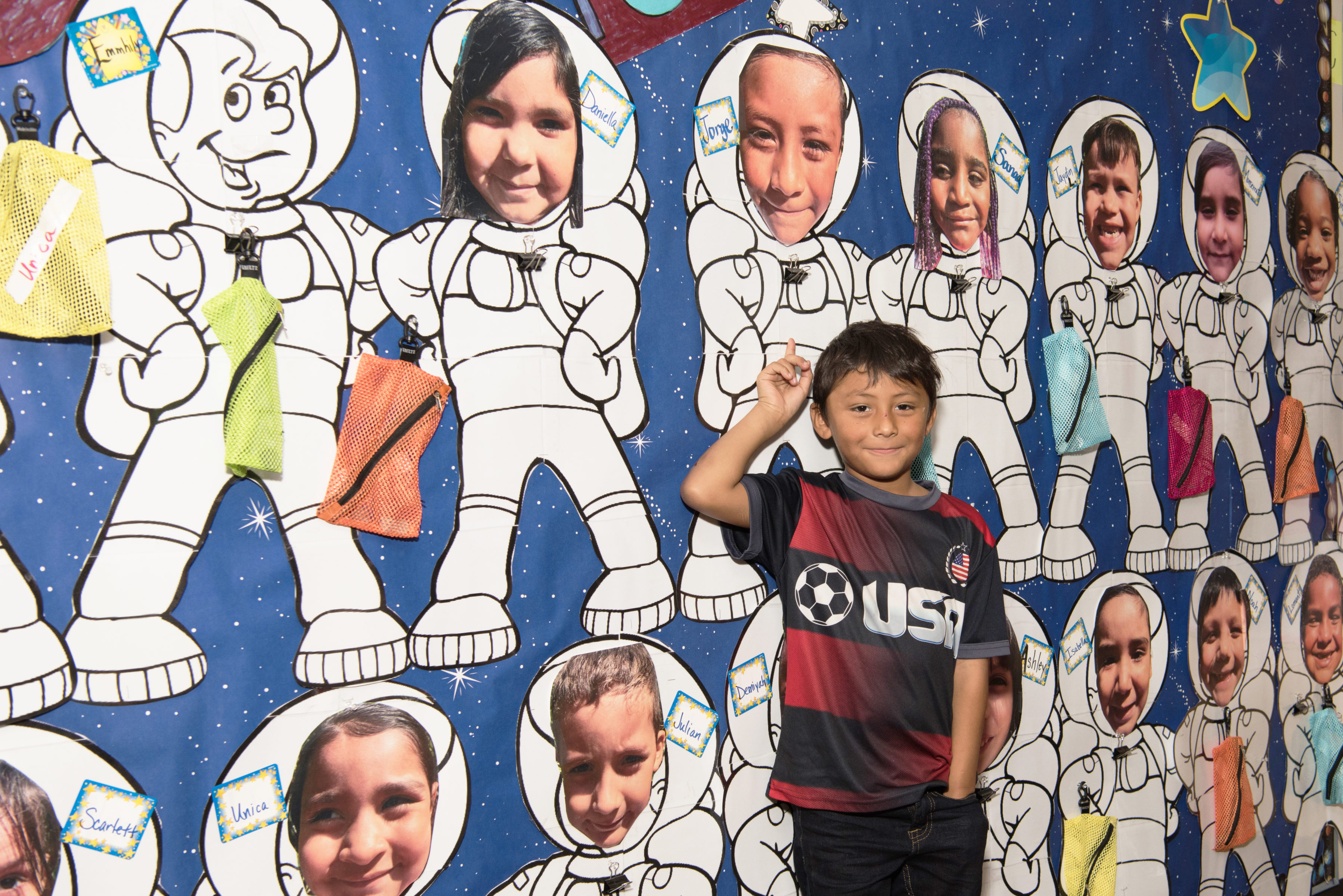
One of Kathleen Loyd’s students points to his astronaut photo.
Kyle is a sophomore. His father struggles with substance abuse and has been in and out of prison. His mother died a year ago. Kyle, who witnessed domestic violence with his parents, has been evicted and is currently homeless. He is fearful of what will happen next in his life.
“It’s hard to concentrate,” he shares. “I’m pretending that everything is OK. It’s hard to share my feelings. I feel that whatever I say doesn’t matter to anyone.”
Kyle is among students in California who have experienced chronic trauma — trauma that is repetitive over time and includes homelessness, abandonment, neglect, violence, abuse and bullying.
Symptoms of chronic trauma include lack of focus, loss of self-esteem, difficulty engaging with others, and being either overly emotional or unemotional, says Giniena Tan, a school psychologist trained in trauma-informed practices at Cerro Villa Middle School in Orange Unified School District.

Giniena Tan
“We are seeing a lot more of this in our schools, at younger ages, and it certainly impacts their academics and social-emotional well-being,” says Tan, a member of Orange Unified Education Association. “For students lacking resiliency skills, it impacts how they function at school. Their grades suffer. Their relationships suffer. There is anger and depression. They don’t feel safe.”
Despite the negative impacts, there are ways educators can help students dealing with chronic trauma and set them or keep them on a path to learning and growth. Here are a few.
1. Let them know you care
“The biggest thing I hear is that these students feel they don’t matter. You have to let them know that they do.”
Kyle attends Monarch School in San Diego, a K-12 school for students who are homeless. Most students experience chronic trauma, say staff.
“We have students who have been homeless for years and students who were middle-class but experienced a big shift and became suddenly homeless,” says Aliza Cruz, a high school science teacher at Monarch. “There are victims of sexual abuse, students exposed to drug and alcohol use from adults, and students suffering addiction themselves.”
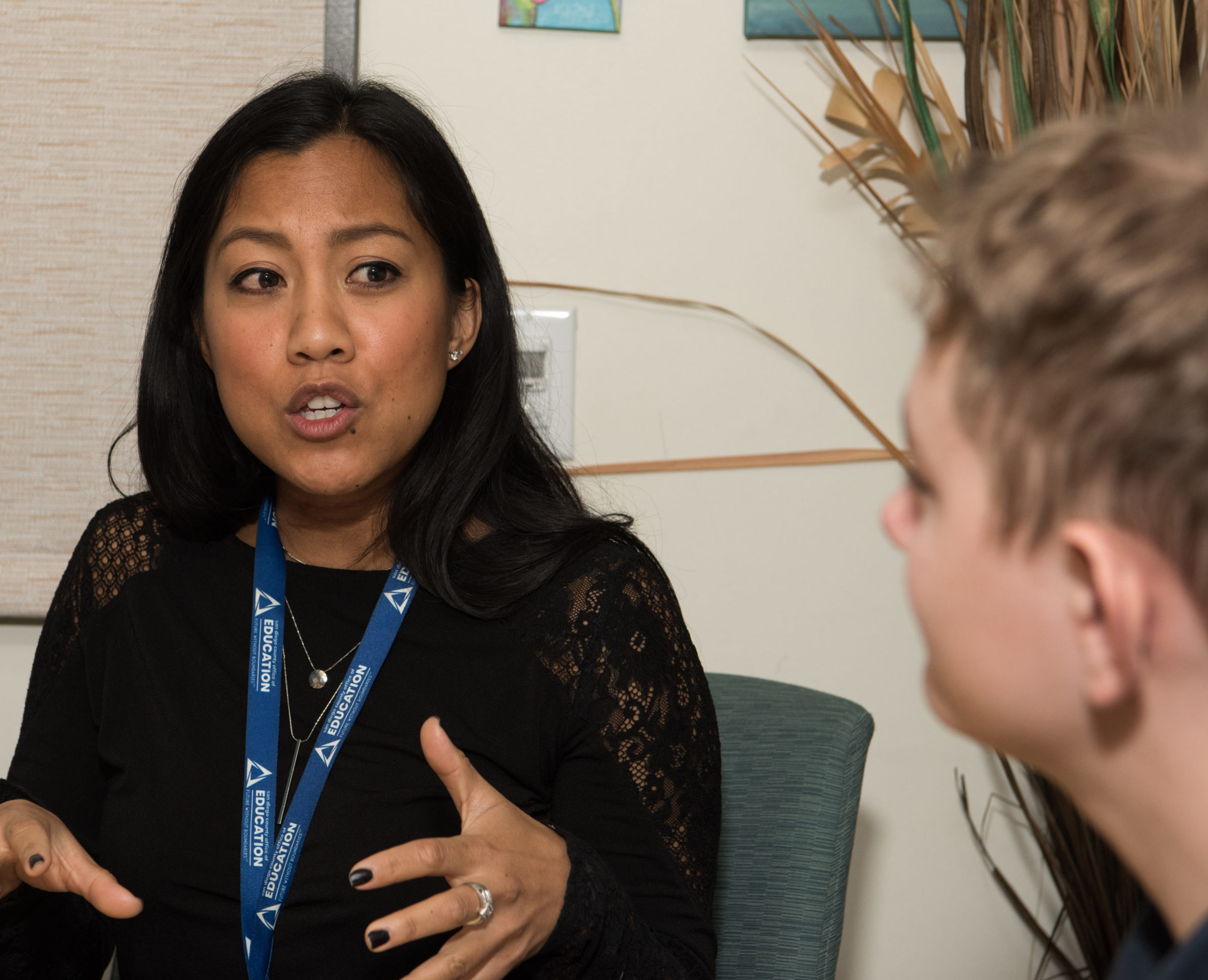
Aliza Cruz teaches at a school for students who are homeless.
The best way for teachers to help students experiencing chronic trauma, including homelessness, is showing caring and compassion and fostering relationships with them, says Cruz, a member of San Diego County Association of Educators (SDCAE). “A lot of them feel it’s them against the world, and they hold you at arm’s length. But once they make that connection to you, they trust you deeply and are very loyal. It takes a lot of work and effort to build that trust. You have to take the time to get to know them as individuals.”
It also means checking your assumptions at the door. For example, a student confided to her that at another school, a teacher refused to accept a handwritten essay the student had written under a streetlamp, because the teacher thought the student was too lazy to type.
“You have to refer these students to resources such as counseling, one-to-one tutoring or sports. Don’t lower your expectations for them, because it is doing them a disservice. Help them understand that they have strengths and a future, and that they have power and a voice.
“The biggest thing I hear is that these students feel they don’t matter. You have to let them know that they do.”
2. Understand the culture of trauma
“I show them repeatedly that they can trust me, so they can switch from a survival culture to a culture of learning.”
Kathleen Loyd, a kindergarten teacher at Monarch and SDCAE member, has heard 5-year-olds talk about drug deals, seeing their parents get high, physical abuse, and parental incarceration like it was no big deal.
“The trauma they’ve experienced definitely affects their behavior and overall quality of life,” says Loyd. “There is a culture to homelessness that nobody really speaks about. There are norms, rules and expectations that people engage in when living among a homeless population.
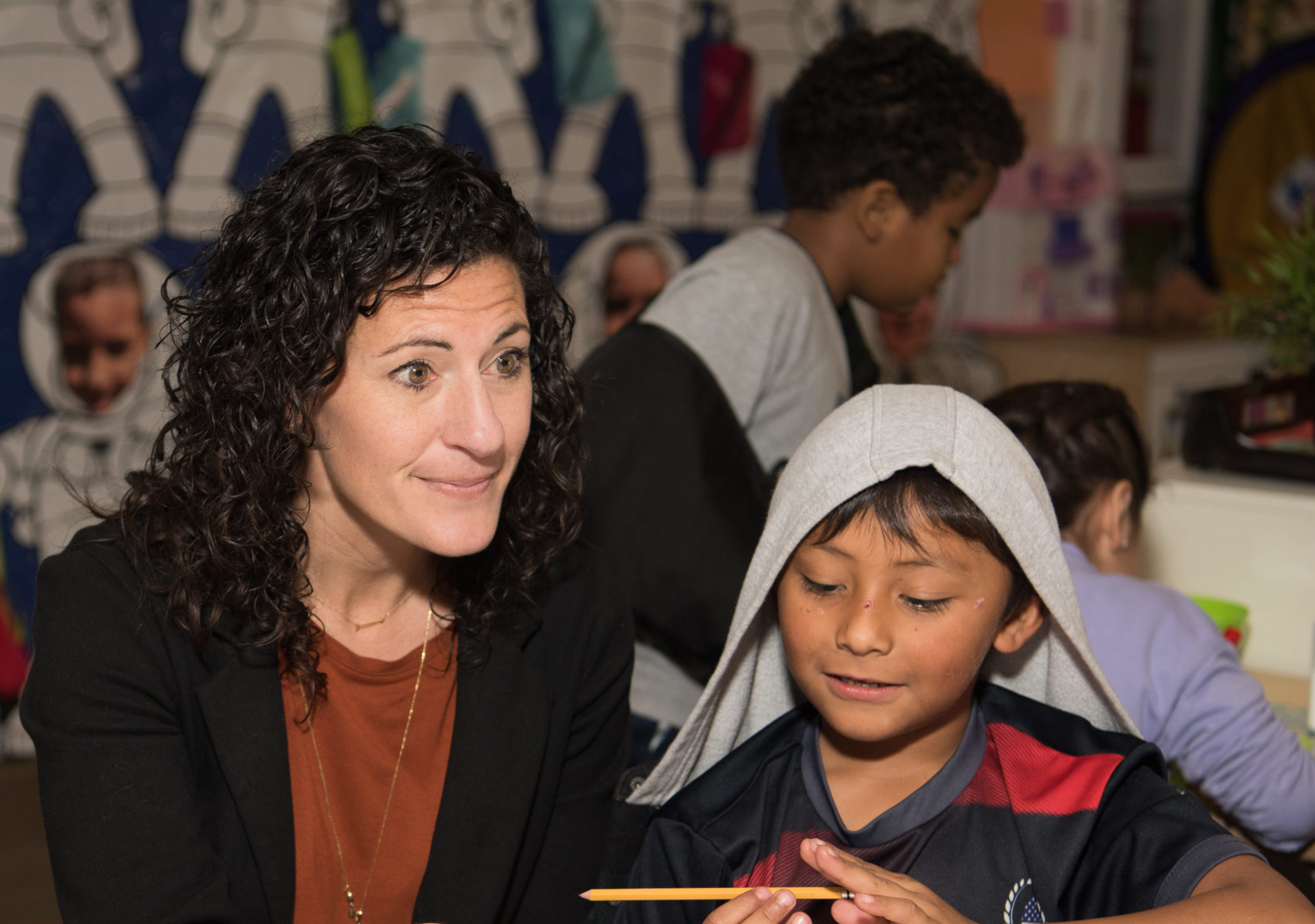
Kathleen Loyd instills a feeling of family with her kindergarten students.
“For example, many mothers expect their children to physically fight and defend themselves against others. In the culture of survival, fighting means they get a meal or get to keep a new backpack. If there is an unguarded toy or food or other necessity, the expectation may be for them to take it. It’s very different from how school functions — and the expectations of our society.”
At school, Loyd teaches the culture of equity.
“I let them know that everyone will get a meal. I show them repeatedly that they can trust me with things such as hurt feelings and taking care of their needs, so they can switch from a survival culture to a culture of learning. I instill a feel of family in my classroom where we are all on the same team and look out for each other. I focus on kindness and teaching them to do the same. This opens them up and they blossom. This is when they are finally ready to learn.”
Loyd says teaching children who are traumatized requires the right amount of empathy and expectations.
“We teach children how to solve and conquer their problems, not to use their problems as an excuse to sit and do nothing. And teachers should not give up on the parents. They are a huge part of a child’s education. We may not approve of the choices they make, but their involvement means the world to these students.”
3. Don’t take it personally
“My students feel confident that regardless of what’s happening at home, they have my love, support and respect at school.”
Talking with students about trauma comes naturally to Kelli Clayton, a first grade teacher at Reese Elementary in Sacramento.
“My family has dealt with poverty, substance abuse and incarceration. I’ve been a ward of the court. It has made me a better educator and taught me things no textbook can teach. If a child tells me they didn’t sleep because they heard their parents arguing, I share how that made me feel as a little girl and ask them how they feel. I’m very authentic with students.”
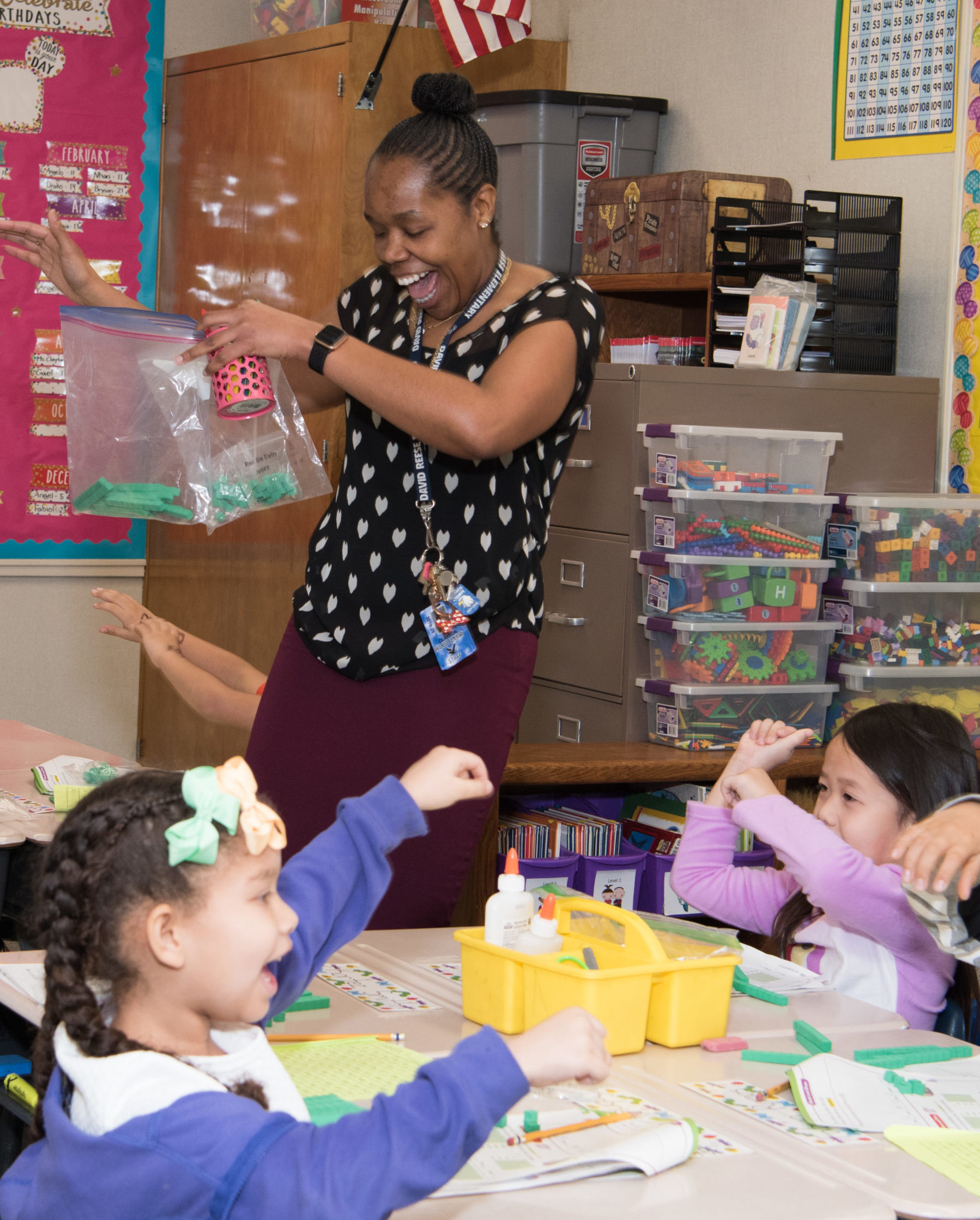
Kelli Clayton gets her students in the mood to learn and have fun.
Clayton, an Elk Grove Education Association member, received trauma-informed training from HEARTS (Healthy Environments and Response to Trauma in Schools) through UC San Francisco, which has been invaluable at her Title I school.
“If a child lashes out at me, I now understand it’s not reflective of how they feel about me personally. If something happens, we don’t pretend it didn’t. We have discussions in circle time.”
A “peace corner” allows students to take a short break if they are feeling stress. Students take “brain breaks,” such as pretending they are trees shaking their leaves, to reduce tension.
“I think the practices I have put into place have been very positive. My students feel confident that regardless of what’s happening at home, they have my love, support and respect at school. Students are learning how to self-regulate before they explode. Asking if they can have a brain break or go to the peace corner are great examples.”
4. Foster empathy
“Many students said they never knew they had the ability to make someone else feel happy. They are absolutely amazed by this.”
Alli McCart teaches fourth graders at John Morse Therapeutic Center, a school for students who have emotional disturbances. Many suffer from chronic trauma, says the Sacramento City Teachers Association member.
“They have dealt with heavy life experiences I don’t think the average adult could handle. Home life for my students ranges from living with family to extended family, appointed guardians and foster care. Some have experienced grief, neglect, abuse and PTSD. Some were bullied at another school and started displaying bullying behavior.”
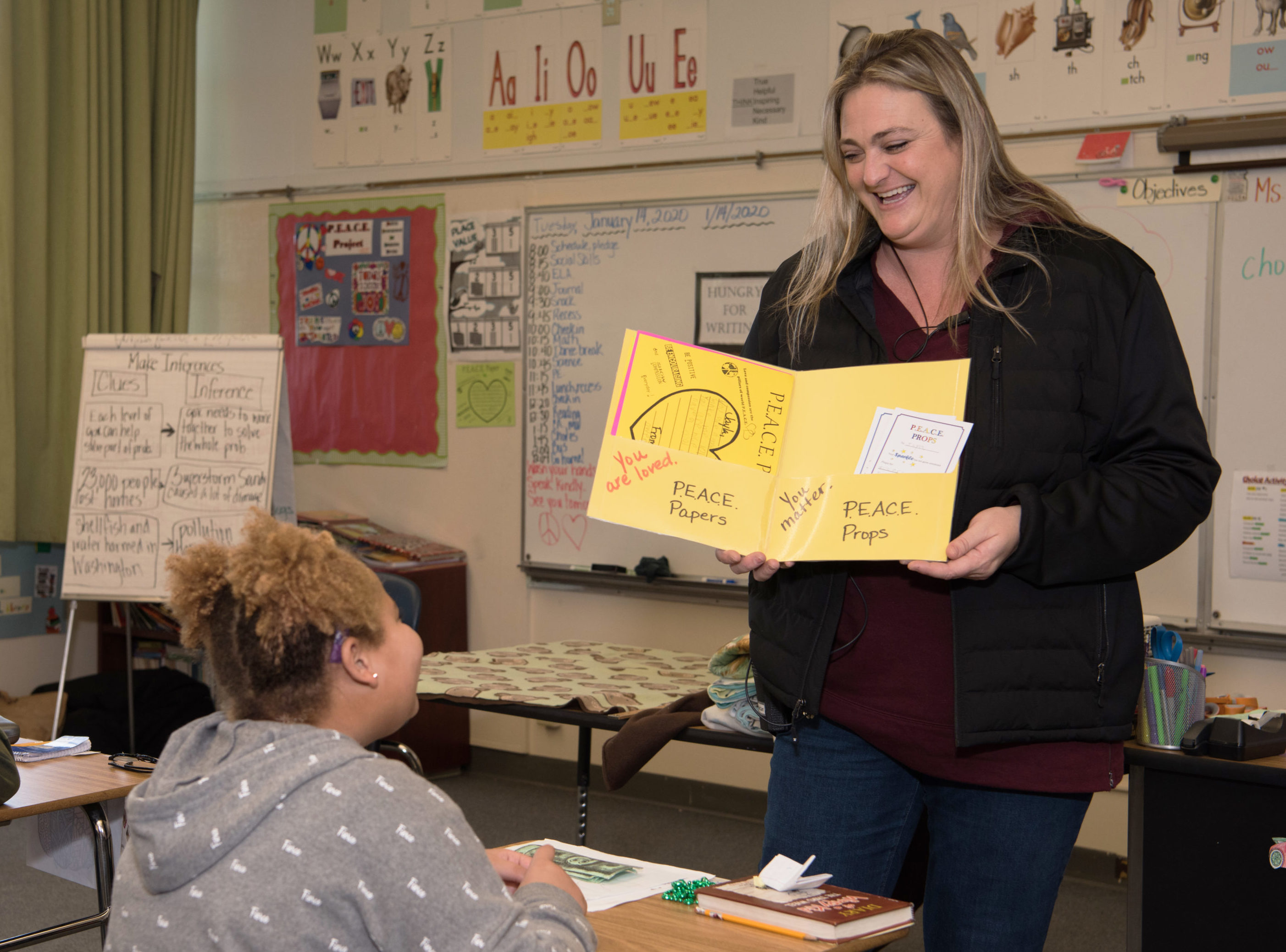
Alli McCart holds PEACE project papers and props that students have written.
Behaviors include crying, anger, yelling, shutting down and depression. However, McCart learned that projects that foster empathy improve behavior, self-image and academics.
She created the PEACE Project (Positivity, Encouragement and Compassion Everyday), which asks students to write positive notes to peers and staff members. Notes range from “I like your shoes” to “I saw you crying this morning and I’m hoping your day gets better.” This expanded to PEACE props, where students give each other a “shout-out” in the cafeteria for doing something positive, like helping someone who fell down, solving a problem or telling the truth.
“When students get into an argument, we stop and refer back to the PEACE Project. We have a ‘think sheet’ where kids work through problems,” McCart says. “They write down what happened, what they were feeling and thinking, and how they could have changed things for the better.”
Her students sent PEACE papers with encouraging words to wildfire victims and students in Parkland, Florida, the site of a school shooting. Students make blankets for medically fragile babies and children experiencing hard times. Helping students focus on helping others has improved the overall campus atmosphere.
“Many said they never knew they had the ability to make someone else feel happy. They are absolutely amazed by this.”
5. Focus on the future
Would you prefer one marshmallow now? Or wait an hour and have two?
It sounds like a trivial question, but it’s not, explain co-teachers Jessica MacCaskey and Jennifer Ortiz to 10th graders at Anaheim High School.
In the famous “marshmallow test,” Stanford researchers followed participants for decades. Children who waited patiently for the second marshmallow were more successful in life — with higher education and incomes and happier marriages — because they could delay gratification.
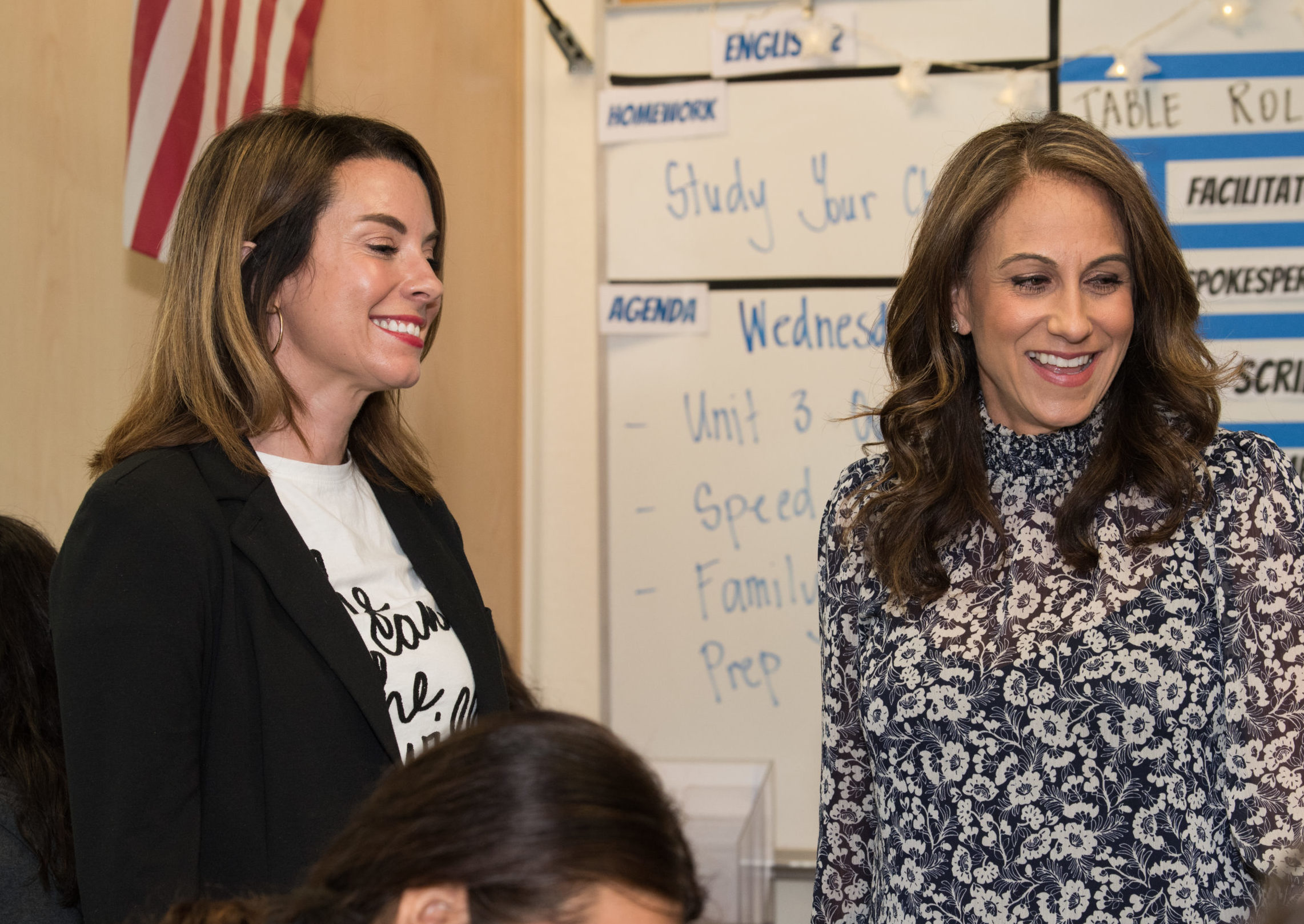
Jessica MacCaskey and Jennifer Ortiz co-teach 10th graders.
MacCaskey, a resource teacher, and Ortiz, an English teacher, co-teach students of differing abilities near Disneyland, the so-called happiest place on earth. Many students — mostly Hispanic and born into generational poverty — have experienced chronic trauma and are at risk for dropping out, joining gangs and risky behavior.
The Anaheim Secondary Teachers Association members have embraced new strategies to help students focus on long-term goals. They ask students to understand how traumatic events negatively impact them and explore positive ways of coping. It’s done through building community, relatable literature, essays and humor, including “dance parties” in the hallway. Students are less truant and try harder, which makes it all worthwhile.
One assignment asked students to share a core memory and how that event shaped them into who they are today. Students wrote stories of abandonment, abuse and loss. The teachers talked with some students individually, referring some to counselors. Students began to trust their teachers, open up and became more vulnerable and empathetic.
When they read The Absolutely True Diary of a Part-Time Indian by Sherman Alexie, where the protagonist copes with adversity and poverty, students were willing to evaluate what was happening in their own world, discuss positive choices, and create “action plans” about what they can do to help break generational poverty within their community. Other teachers and administrators have been “guest speakers,” sharing personal stories of overcoming hardships.
“I always thought adults who worked here had perfect lives,” shares one student. “But knowing they have gone through hard times — like I have — gives me hope.”
For more about MacCaskey and Ortiz’s strategies with students who deal with trauma, see the sidebar “How Educators Can Keep the Focus on Learning” below.
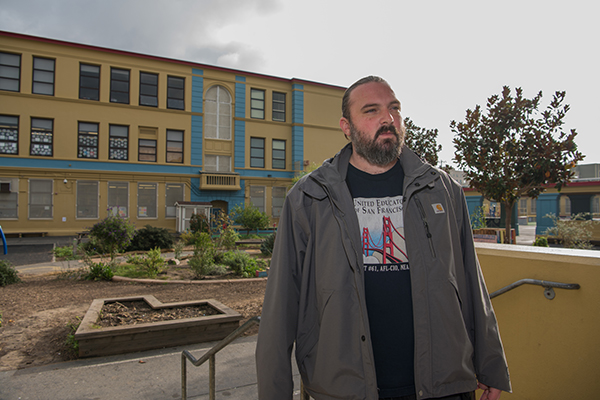
Shelter at school: Nick Chandler, social worker at Buena Vista Horace Mann K-8 School in San Francisco, was instrumental in the school’s decision in November 2018 to open a shelter in the gym to help homeless families. The Stay Over Program has continued during the pandemic. “Students who are chronically homeless are not rested,” says the United Educators of San Francisco member. “They are under stress, and cortisol levels in their brain are raised, so they are in fight-or-flight mode instead of learning mode.”
Expert Insights
Jamie Howard, director of the Trauma and Resilience Service at the Child Mind Institute in New York, offers suggestions on when and how to help students experiencing chronic trauma.
When is intervention needed?
If you notice functional impairment — students aren’t able to focus on schoolwork, make and keep friends, and engage in activities they enjoy — make a referral to a counselor or mental health professional who can do assessment and offer coping strategies. When in doubt, make a referral.
How can educators help?
It’s important to view behavior through a trauma lens. Instead of saying “Why is this student so oppositional?” ask “Why is he behaving this way?” Instead of saying “She’s uninterested in school,” ask “Why isn’t this student as engaged as she used to be?” Rather than presume a student is uninterested or noncompliant, consider that something else may be going on.
A compassionate response helps draw kids out. Saying something like “I notice you are having trouble concentrating” makes a student more likely to share what’s going on, rather than saying “You need to start paying attention.” Don’t take student behavior personally. It can look like someone is a bad kid, but the truth is they are a good kid who has been through something bad.
How Educators Can Keep the Focus on Learning
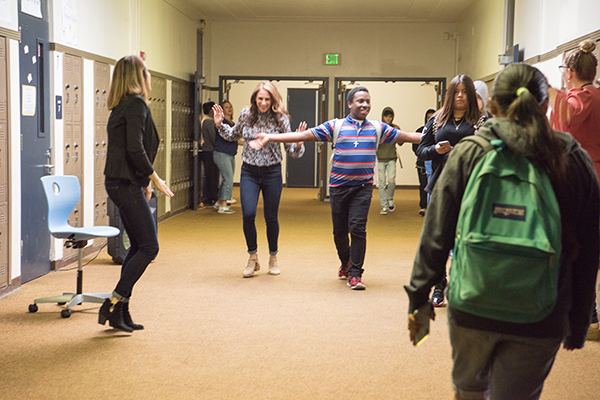
MacCaskey and Ortiz hold “Dance Party Fridays” in the school hallway.
High school English teacher Jennifer Ortiz and resource specialist Jessica MacCaskey, who co-teach at Anaheim High School, deal with students experiencing chronic trauma on a daily basis. The pair spoke at a press conference in October, where a new UCLA report on student homelessness in California was announced. Below, their edited comments.
Jennifer Ortiz
We asked our 10th grade English students to write about a core memory, experiences that had deeply impacted them. Nearly half of our 188 students wrote about having endured trauma. Their memories included homelessness, extreme poverty, neglect and abuse. One of our students shared how his family had been homeless for the last year, moving from family member to family member and in and out of motels. As with the rest of our students, this gave us great insight into his life and gave a new meaning to his failing grades and numerous suspensions.
Our job is to teach English, but how do you get a student to care about Shakespeare or argumentative essays when their basic human needs are not being met? Why should they care about making sure they are “a-g” eligible if they don’t know where they are going to sleep that night?
Jessica and I saw a great opportunity to broaden our scope of practice to meet the diverse academic, social and mental health needs of our students, and we took it upon ourselves to do quite a bit of research and soul searching to feel confident and qualified to do so.
One observation we made when executing trauma-informed instruction was our students’ use of maladaptive coping strategies to deal with their traumas. Their gravitation toward self-soothing by misuse/abuse of alcohol and drugs, disassociating with excessive screen time, poor eating and sleeping patterns, and self-harm resulted in severe disengagement from school. We wanted to do our part, as the adults that see them daily, to help heal some of the pain that was hindering their ability to learn.
Jessica MacCaskey
For these students, Anaheim High is the one constant in their lives. We wanted to create a safe and caring environment where they feel comfortable self-reporting trauma and adversities. So, we created a classroom culture that flourished with inclusiveness, acceptance, vulnerability and a lot of laughter.
We held dance party Fridays and pulled a gigantic speaker into the hallway every passing period, encouraging students to recognize the ability music, dance and laughter have to decrease anxiety. We read stories and novels about characters who faced and overcame adversity and articles about effective coping strategies. And we invited fellow Anaheim teachers and administrators to come share their own childhood experiences with homelessness, poverty and generational trauma. We, along with our students, were moved to tears by their willingness to share their stories.
Afterwards, our students opened up to us even more, having felt the overwhelming support of their peers and teachers. Our student who wrote about how severely homelessness was impacting his ability to learn wrote a moving thank-you letter. He started putting more effort in his classes and advocating for the help he needed. [Focusing] on his social-emotional needs resulted in a marked improvement in his grades.
This experience has forever changed our teaching practices, and we have come to realize that putting time and energy into addressing the traumas that have held our students back creates a classroom culture that allows our students to focus on their learning and reach their utmost potential.